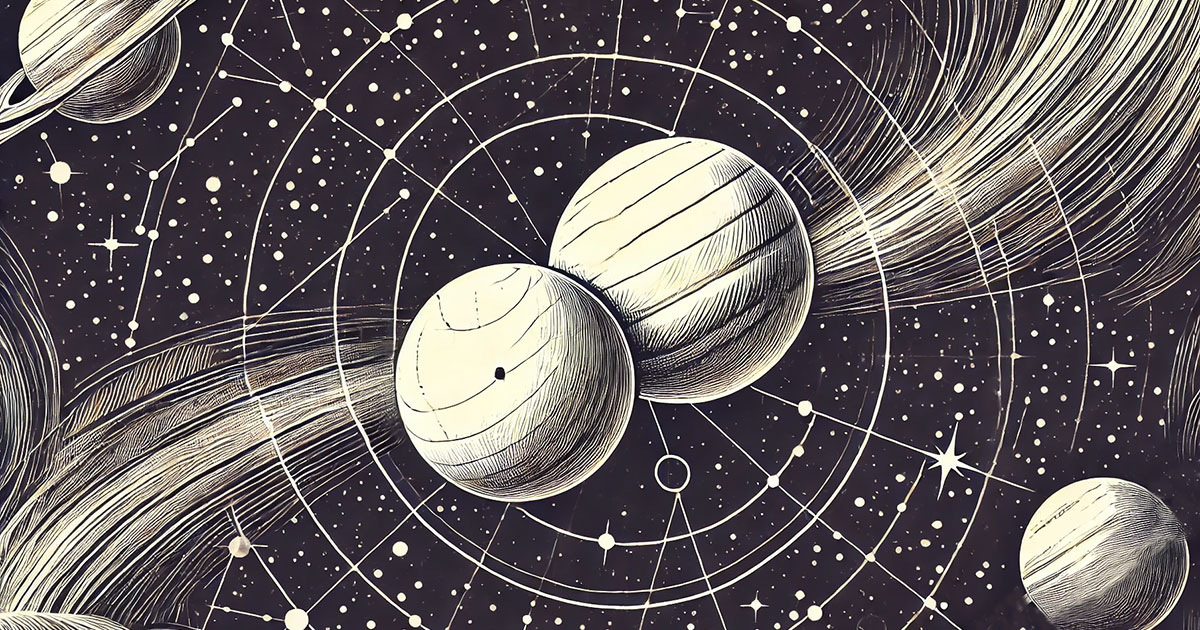Astrology Aspects: Understanding Planetary Relationships and Their Impact
Aspects in astrology are the angular relationships between planets, defined by degrees and "orbs" of influence. These aspects shape planetary dynamics, providing insights into an individual's psychological patterns and life experiences.

The Role of Aspects in Astrology
Aspects refer to the specific angular relationships between planets in an astrology chart, with these angles measured in degrees to represent the distances between two or more planets along the ecliptic. The term orb is used to describe the range within which an aspect is considered effective, acknowledging that exact angles are rarely precise in practice. The significance of aspects, and their orbs, lies in their ability to describe the interactions and dynamics between different planetary energies, providing insights into various psychological and experiential patterns within an individual’s life.
Natal Aspects vs. Transit Aspects
Natal aspects are the angular relationships between planets at the exact moment of an individual’s birth. These aspects are fixed in the birth chart and represent the intrinsic qualities, tendencies, and potential conflicts or harmonies within a person’s character. For example, a natal square between the Moon and Mars may suggest a tension between emotional expression and assertive action, often manifesting as inner conflict regarding the pursuit of desires and emotional needs. A natal trine between Venus and Jupiter might indicate a natural ease and abundance in matters related to love, pleasure, and personal values.
Transit aspects, by contrast, occur as the planets continue their movement through the zodiac, forming new angles with the natal planets in an individual’s birth chart. These aspects are temporary and signify periods of activation, where the underlying energies of the natal aspects are brought to the surface through external events or internal shifts. For instance, when transiting Saturn forms a square with natal Mercury, it may indicate a time of mental strain, challenges in communication, or a need for disciplined thinking. Unlike natal aspects, which describe consistent personality traits and life themes, transit aspects highlight the timing of specific experiences and developmental processes.
Major and Minor Aspects
Aspects are categorized into major and minor aspects based on their angular distance and significance. Major aspects include the conjunction (0°), opposition (180°), square (90°), trine (120°), and sextile (60°). These aspects are considered the most influential and are commonly used in astrological interpretation due to their strong and clear impact on the planetary energies involved.
A conjunction occurs when two planets are at the same degree, leading to a blending or intensification of their energies. This aspect is often seen as powerful, whether positive or negative, depending on the nature of the planets involved. An opposition, formed at 180°, represents a polarization of energies, often leading to tension or the need for balance between opposing forces. The square, at 90°, is traditionally seen as a challenging aspect, creating friction that often requires active effort or conflict resolution. The trine, at 120°, suggests a harmonious and easy flow between planets, facilitating natural talents or favorable conditions. The sextile, at 60°, is also considered positive, indicating opportunities and cooperative interactions between planets.
Minor aspects include the semi-square (45°), sesquiquadrate (135°), quincunx (150°), and others like the quintile (72°) and biquintile (144°). These aspects are subtler in influence and often describe underlying, less obvious dynamics that may require more attention to recognize in practice. For instance, the quincunx, or inconjunct, represents a misalignment between planets, often requiring adjustment or adaptation to integrate the conflicting energies. While minor aspects may not be as immediately impactful as major aspects, they provide depth and nuance in chart interpretation, revealing the complexities of an individual’s internal and external experiences.
The Role of Aspects in the Birth Chart
Aspects in a birth chart serve as the connections between the various planetary energies, shaping the individual’s personality, behavior, and life experiences. Major aspects tend to outline the core themes of a person’s life, where certain planets either support or challenge each other, leading to the development of specific traits or recurring patterns. For example, a natal square between the Sun and Saturn might suggest a lifelong struggle with self-doubt, authority, or achieving recognition, while a trine between Mercury and Uranus could indicate a natural aptitude for innovative thinking and quick mental processing.
Minor aspects add layers of complexity, often pointing to subtle influences that might not dominate a person’s life but still play a significant role in shaping their responses to various situations. A natal quincunx between Venus and Neptune, for example, could indicate underlying confusion or idealization in relationships, requiring conscious effort to reconcile romantic ideals with reality.
The interplay of natal and transit aspects provides a dynamic view of an individual’s life journey. Natal aspects outline the fundamental structure, indicating potential strengths, weaknesses, and challenges. Transit aspects, on the other hand, signify the timing of important events, shifts, or periods of growth, as they activate different parts of the natal chart.
Understanding the difference between major and minor aspects, as well as natal and transit aspects, is crucial in astrological analysis. It allows for a detailed and accurate interpretation of the forces at play in an individual’s life, helping to uncover the deeper meanings behind personal experiences, challenges, and opportunities.